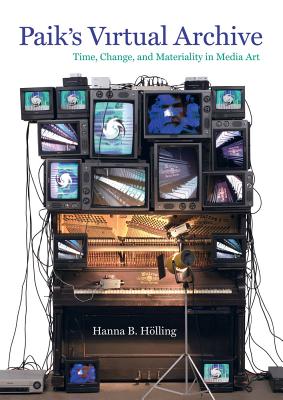
Paik's Virtual Archive: Time, Change, and Materiality in Media Art
Description
In Paik’s Virtual Archive, Hanna B. Hölling contemplates the identity of multimedia artworks by reconsidering the role of conservation in our understanding of what the artwork is and how it functions within and beyond a specific historical moment. In Hölling’s discussion of works by Nam June Paik (1932–2006), the hugely influential Korean American artist who is considered the progenitor of video art, she explores the relation between the artworks’ concept and material, theories of musical performance and performativity, and the Bergsonian concept of duration, as well as the parts these elements play in the conceptualization of multimedia artworks. Hölling combines her astute assessment of artistic technologies with ideas from art theory, philosophy, and aesthetics to probe questions related to materials and materiality, not just in Paik’s work but in contemporary art in general. Ultimately, she proposes that the archive—the physical and virtual realm that encompasses all that is known about an artwork—is the foundation for the identity and continuity of every work of art.
Praise for Paik's Virtual Archive: Time, Change, and Materiality in Media Art
““How do we care for the increasing number of artworks that challenge previously accepted notions of time and space? Hanna Hölling’s new book is an ambitious and clear-eyed attempt to provide an answer to that question, calling for a fundamental rethinking of curatorial and conservational notions of time and change in media artworks. . . . And yet, as Hölling makes clear, there is no going back when it comes to Paik. . . . Her combined museological and academic outlooks uniquely shape Paik’s Virtual Archive, a book that will likely become required reading in curatorial and preservation graduate programs, and which will also be of keen interest to scholars in the fields of modern and contemporary art and media studies.”
— The Art Bulletin
“As an Art Historian and Conservator, Hölling offers a deep and lucid meditation on ephemerality that is both theoretical and practical. . . . She draws from a range of European theorists to offer her post-structural view of the archive as a place of potentials: ‘divorcing the archive from its exclusive “pastness,” one might conceive of the museum archive as a place where conservators and curators undertake the process of de – and re-activating artwork. . . . Hölling provides a compelling rationale for not dismissing attempts to re-imagine the artist’s concept that makes sense for precarious digital works that may gain a new, different life separate from their original coded existence.”
— Visual Studies
"In a memorable opening to Paik’s Virtual Archive: Time, Change, and Materiality in Media Art, conservator and scholar Hanna Hölling recounts how she received the devastating news that Canopus, a laserdisc video work by Nam June Paik, had crashed down from a wall at her then-workplace. By taking this and other Paik “multimedia installations” as the book’s narrative thread– originally her PhD thesis–Hölling generously unpacks her theme: How does the identity of a multimedia artwork persist through every act of conservation, every replacement or renewal, every redisplay, and every re-interpretation, especially given its inexorable material decay along the way? . . . She hints at a radical future where any difference between art and archive become more and more equivocal in terms of authorship, curation, and preservation.”
— Journal of the American Institute for Conservation
“Hölling's explanations...show how the practice of media art is integrated into the institutional conventions on the one hand, and how it can cause an institutional structural change on the other. The study is characterized by the fact that it not only describes the current change, but also makes theoretical suggestions in order to grasp the changing work identity of a multimedia installation between storage and presentation. Hölling's book also provides a fundamental access to the current debate within the contemporary restoration discussion, which has so far hardly been received in the German-speaking context. . . . Because, as Hölling shows convincingly, these works are constantly being reconstituted in the context of conservation practices and are accordingly incomplete.”
— Kunst Chronik
"The author does not only offer an analysis of the installations in the traditional context of conservation of works of art, that is to say in the conditions of observation, measurement and analysis. Rather, it seeks to understand their conception in a regime of cultural, scientific and dynamic relationships. The book takes its originality from the museographic approach, which is broken down into three parts: the first, "Concept and Materiality", where artistic and performative media are mentioned; the second, “Time and Changeability”, which deals with questions of time and conservation; and the third, "Archive and Identity", where the concepts of the material and immaterial archive are advanced, with archival and museographic implications."
— Critique d’art
